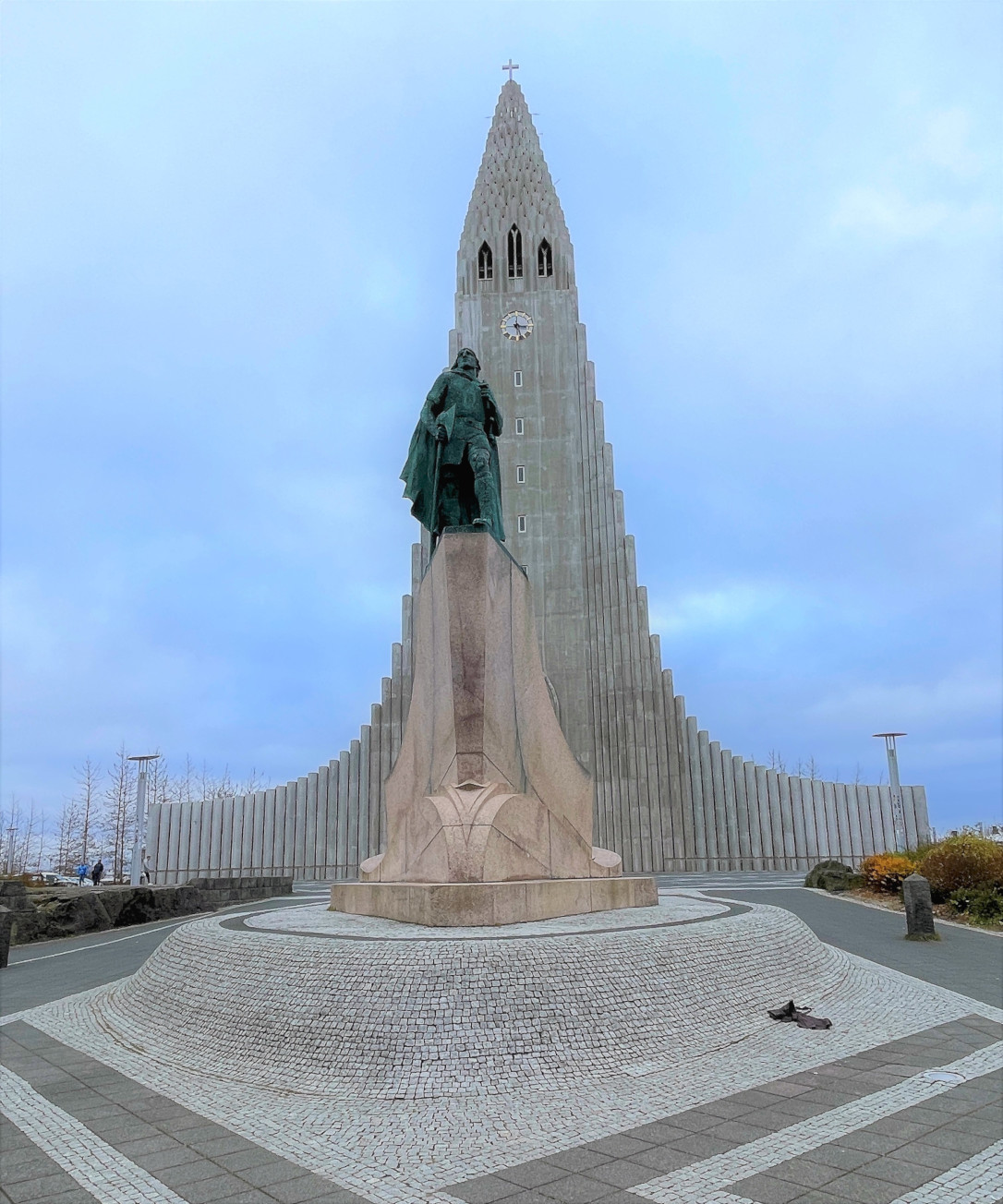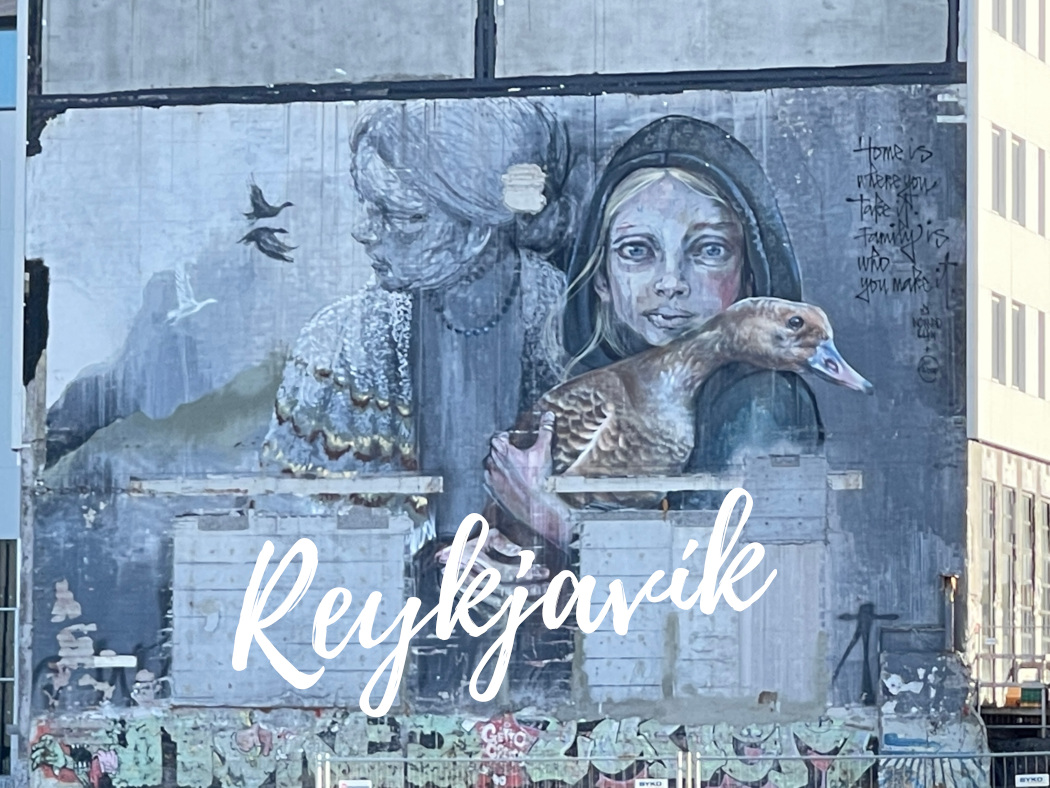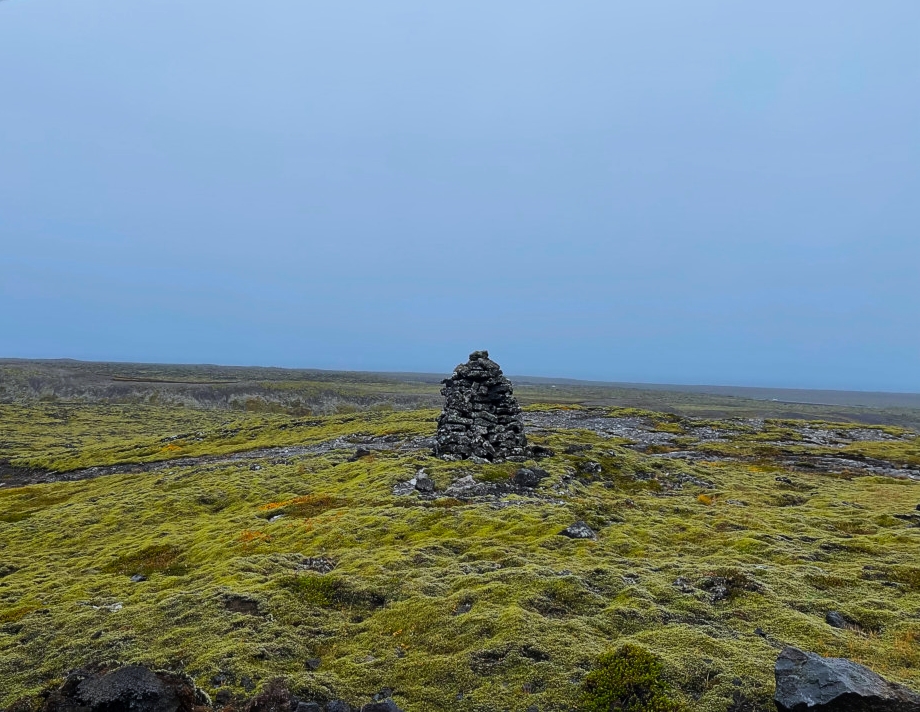 |
| Photo 1: Ljósvallagata 8. |
 |
| Photo 2: The first row of houses is Tjarnargata. Right above it is Suðurgata and then the tree-covered Hólavalla Cemetery with Ljósvallagata right behind it. Ljósvallagata 8 is the grey house sticking out from the trees in mid-photo. Courtesy of Jimmy Kirkus-Lamont |
Sveinn was a big believer in dreams. He believed there were different types of dreams, so considerations and care should be taken when interpreting them. He felt the imagination was at more liberty while dreaming and discernment seemed to go out the window. Therefore, the most far-fetched things could appear very normal and probable in dreams.
Even though this was the case, sometimes in our dreams we become aware of it and wonder about the things we are experiencing. This shows that we still have some capability of judgement even in our dreams.
It wasn’t just the normalization of the improbable that Sveinn felt made dreams different from reality. Time played out differently as well. It was like the dream was a lot faster than your thoughts and the dream, which seemed to take forever, was happening in a very short time period.
 |
| Photo 3: Reverend Sveinn Víkingur. Source |
Because dreams were different, they served different purposes. Some dreams told you about your quality of sleep, while others about your physical misery like if you can’t get comfortable in your bed. There are also dreams that stem from old memories and the things that are stuck on your mind.
There are also dreams that have a much deeper and more spiritual nature. Sometimes they bear a strong witness that a man’s soul can leave the sleeping body and travel to distant places. There are also dreams where we receive mental messages from others or even witness future events.
Whatever the interpretation of what dreams are, taking them seriously is deep-rooted in the Icelandic culture. Discussing dreams and figuring out their meanings is a common discussion with a cup of coffee.
In the 1940’s Sveinn and his wife, Sigurveig Gunnarsdóttir (1905-1998) lived at Ljósvallagata 8. The floor plan of the apartment was such that the front door led down a long narrow hallway with doors on both sides. At the beginning of the hallway were two doors, one on each side. One was into the kitchen and the other one to the bedroom. Further down the hall was a telephone.
 |
| Photo 4: Ljósvallagata 8 is the grey building in the center. |
One night Sveinn dreamt that he woke up to someone opening the front door and walked into the kitchen. He was certain it was a thief and woke up his wife. After telling her what he had heard, he hurried out of bed and got dressed.
Sveinn tiptoed over to the door and quietly cracked it open just enough to peek out into the dark hallway. He looked over at the kitchen door across the hall. It was closed, but he could clearly see light coming through the cracks. He knew the thief was in there.
Sveinn’s first thought was to call the police, but was worried the thief would hear him and attack him. Instead he decided to man up and attack the thief himself. He sneaked into the hallway pushed the door open into the kitchen.
As the door flung open, Sveinn saw the intruder standing by the cupboard in the corner near the window. He had a rug over his head covering him completely. Sveinn was standing by the door staring at the rug covered thief when he noticed that the man had a gun and was pointing it right at him. Then he woke up.
Sveinn lied awake in bed thinking about what he had just dreamt. He woke up his wife to tell her about it. After listening to his dream, they decided it was best if Sveinn got up and made sure everything was okay in the apartment.
 |
| Photo 5: Ljósvallagata 8. A tunnel that goes to the back of the building. |
Sveinn got out of bed and put some clothes on. He then tiptoed over to the door and peeked out into the dark hallway. He looked over at the kitchen door across the hallway. It was slightly ajar and light was shining through the cracks.
Sveinn tiptoed across the hall and pushed the kitchen door open. He saw a man standing by the cupboard in the corner of the kitchen, but it wasn’t a thief. It was his son. The son was quite startled to see his dad. It was late and he expected his parents to be sound asleep. He had come home very late and was hungry, so he was grabbing some bread and milk.
Sveinn felt this particular type of dream was of the kind that interpreted events heard in the current environment of the individual dreaming. His perception of the sound of the son opening the front door had become obscured and the dream kicked his imagination into gear.



